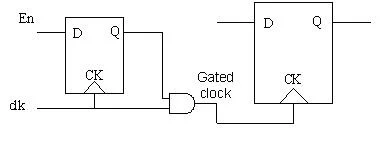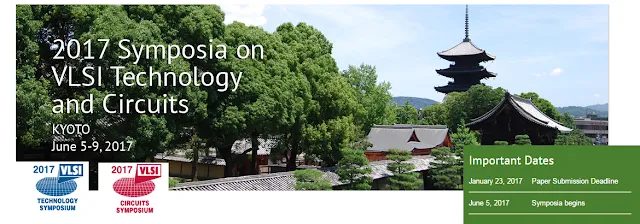For the past 30 years, the combined annual Symposia on VLSI Technology and Circuits have provided an opportunity for the world’s top device technologists, circuit and system designers to engage in an open exchange of leading edge ideas at the world’s premier mid-year conference for microelectronics technology. Held together since 1987, the Symposia on VLSI Technology and Circuits have alternated each year between sites in the US and Japan, enabling attendees to learn about new directions in the development of VLSI technology & circuit design through the industry’s leading research and development presentations.
The comprehensive technical programs at the two Symposia are augmented with short courses, invited speakers and several evening panel sessions. Since 2012, the Symposia have presented joint focus sessions that include invited and contributed papers on topics of mutual interest to both technology and circuit attendees. A single registration enables participants to attend both Symposia.
Online paper submission:
Online paper submissions are now open for the 2017 Symposia on VLSI Technology and Circuits, to be held at the Rihga Royal Hotel in Kyoto, Japan from June 5 – 8, 2017. In a departure from previous years, both Symposia (VLSI Technology and VLSI Circuits) will be held on a fully overlapping schedule from June 6 – 8, preceded by Short Courses on June 5.
This year’s Symposia theme is “Harmonious Integration Toward Next Dimensions.” Authors are encouraged to submit papers that showcase innovations that extend beyond single ICs and into the module level, with co-optimization of device technology and circuit/system design, including focus areas in the Internet of Things (IoT), industrial electronics, ‘big data’ management, artificial intelligence (AI), biomedical applications, virtual reality (VR) / augmented reality (AR), robotics and smart cars. These topics will be featured in focus sessions as part of the program.
The Symposium on VLSI Technology seeks technical innovation and advances in all aspects of IC technology, as well as the emerging IoT (Internet of Things) field, including:
- IoT systems & technologies, including ultra-low power, heterogeneous integration, wearable devices, sensors, connectivity, power management, digital/analog, microcontrollers and application processors
- Stand-alone & embedded memories, including technology & reliability for DRAM, SRAM, (3D-)NAND, MRAM, PCRAM, ReRAM and emerging memory technologies
- CMOS Technology, microprocessors & SoCs, including scaling, VLSI manufacturing concepts and yield optimization
- RF / analog / digital technologies for mixed-signal SoC, RF front end; analog, mixed-signal I/O, high voltage, imaging, MEMS, integrated sensors
- Process & material technologies, including advanced transistor process and architecture, modeling and reliability; alternate channel; advanced lithography, high-density patterning; SOI and III-V technologies, photonics, local interconnects and Cu/optical interconnect scaling
- Packaging technologies & System-in-Package (SiP), including through-silicon vias (TSVs), power & thermal management, inter-chip communication, 3D-system integration, as well as yield & test issues
- Photonics Technology & ‘Beyond CMOS’ devices
The Symposium on VLSI Circuits seeks original papers showcasing technical innovations and advances in the following areas:
- Digital circuits, processors and architectures, including circuits and techniques for standalone and embedded processors
- Memory circuits, architectures & interfaces for volatile and non-volatile memories, including emerging memory technologies
- Frequency generation and clock circuits for high-speed digital and mixed-signal applications
- Analog and mixed-signal circuits, including amplifiers, filters and data converters
- Wireline receivers & transmitters, including circuits for inter-chip and long-reach applications
- Wireless receivers & transmitters, including circuits for WAN, LAN, PAN, BAN, inter-chip and mm-wave applications
- Power conversion circuits, including battery management, voltage regulation, and energy harvesting
- Imagers, displays, sensors, VLSI circuits & systems for biomedical, healthcare and wearable applications
Joint Technology & Circuits focus sessions feature invited and contributed papers highlighting innovations and advances in the following areas of joint interest:
- IoT /ULP (Internet of Things / Ultra Low Power) devices: Advanced CMOS processes for ULP, design enablement, design for manufacturing, process/design co-optimization, on-die monitoring of variability and reliability
- New Computing: Artificial intelligence, ‘beyond von Neumann’ computing, machine learning, neuromorphic & in-memory / in-sensor computing
- 2D MOSFETs / New concepts for channel & gate materials: Graphene, MoS2, α-Si / poly-Si or flexible organic materials for ‘More than Moore’ devices
- Emerging memory technology & design: SRAM, DRAM, Flash, PCRAM, RRAM, and MRAM, Memristor, 3D Xpoint memory technologies
- Design in scaled technologies: scaling of digital, memory, analog and mixed-signal circuits in advanced CMOS processes
- 3D & heterogeneous integration: power and thermal management; inter-chip communications, SIP architectures and applications
Best Student Paper Award
Awards for best student paper at each Symposia are chosen based on the quality of the papers and presentations. The recipients will receive a monetary award, travel cost support and a certificate at the opening session of the 2018 Symposium. For a paper to be reviewed for this award, the author must be enrolled as a full-time student at the time of submission, must be the lead author and presenter of the paper, and must indicate on the web submission form that the paper is a student paper.
Sponsoring Organizations
The Symposium on VLSI Technology is sponsored by the IEEE Electron Devices Society and the Japan Society of Applied Physics, in cooperation with the IEEE Solid State Circuits Society.
The Symposium on VLSI Circuits is sponsored by the IEEE Solid State Circuits Society and the Japan Society of Applied Physics, in cooperation with the Institute of Electronics, Information and Communication Engineers and the IEEE Electron Devices Society.
Further Information, Registration and Official Call for Papers









